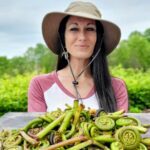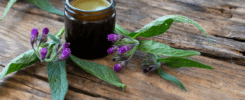Worlds Oldest Remedy
It is safe to say that herbal tea, otherwise known as an herbal ifusion, is the oldest form of administering plant medicine in the world. Steeping plants and roots in hot water is nothing new to mankind. In fact, humans have been drinking herbal tea for more than 5,000 years, not just for medicinal reasons, but simply because it tastes good.
Tea is simple, basic, effective, and you don’t need any special tools to make it. A cup, herbs and some water, and your good to go!
Basic Tea
Making herbal tea is as simple as it gets but there are a couple guidelines that will make it easier for you.
First is the herbs. You must decide what herbs combinations you want to use in your herbal tea. You can also choose to to use only one herb if you desire.
Herbs such as lemonbalm, chamomile, ginger, stinging nettle, peppermint and catnip, are all tasty and aromic herbs that make great additions or combinations.
A great example is if you want to use something such as dandelion greens or root, which can be bitter tasting, you can offset this taste with adding lemonbalm. Everything is going to depend on your taste and personal needs.

Fresh or Dried?
Most people make herbal tea using dried herbs, but fresh herbs can be used all the same. You will follow the same instructions using fresh herbs, with one difference, the herb amount. Dried herbs have been dried and often crushed, which concentrates their flavor, making them more potent than fresh herbs. Fresh herbs have a higher water content, so they’re not as strong. To make an herbal tea with fresh herbs, you will double the amount that you use dried. See below for more details.
Herbal Blend: Within the herbal world we don’t have specific measurements, we have what’s called parts. Parts can be any desired amount.
An example: I decide to make a tea using 2 parts lemonbalm and 1 part dandelion. My lemonbalm measurement will be 2 cups and my dandelion 1 cup. I could make this measurement teaspoons, ounces, cups, etc. A part is simply an equal amount to the other.

Make Your Mix
Use a large bowl to mix your herbs. Add herb parts to your bowl and mix well with a large spoon. Store dried mix in a Mason jar away from sunlight in a cool dark cabinet. Use as needed.

Recommend Amounts
There is a rule of thumb with tea measurements that is extremely simple:
1- 2 teaspoons of herbs, per 1 cup of boiling water.
Some people can tolerate more, but this is the standard measurement for herbal tea.
You will place your herbs inside of a tea ball strainer, inside of a cup or mug. Poor boiling water over the herbs and allow it to steep for 10 to 15 minutes. Enjoy!
We don’t recommend using processed sugar, but if you like a little sweetener, you can always add some raw honey!
How Often?
Most herbalist recommend 3 to 4 cups of herbal tea daily, but sometimes 5 cups daily are required. This would be the recommended dose during times of sickness or someone suffering from chronic conditions. The amount however will be determined by the herbs used, by taking into account the their safety precautions.
Herbs such as lemonbalm or stinging nettle are perfectly safe for most healthy people to drink all day long. However, if you take medication, or are pregnant or nursing, it’s important to speak to your doctor first. Certain herbs, although completely safe when taken alone, can potentially interact with medications or be harmful for an unborn fetus. Safety always comes first.
Safety Considerations
Herbal medicine is still medicine. It’s important to understand the safety precautions of all the herbs that you intend to use. Certain herbs can have interactions with medications as well as health disorders. Speak with your health care provider first if you have any health concerns, pregnant, nursing or are taking medication. This applies to anybody you are making a remedy for as well. Click here to view our disclaimer here.

Final Thought
Herbal tea can be a wonderful way to enjoy the health and medicinal benefits of plants. If you are a beginner, making herbal tea is also a great way to get to know your herbs and their functions.
Start small, working with easy to grow or identify herbs. Stinging nettle, lemonbalm and chamomile are great herbs to begin with. Remember, have fun with the process, and you will learn along the way!
Stay Wild


